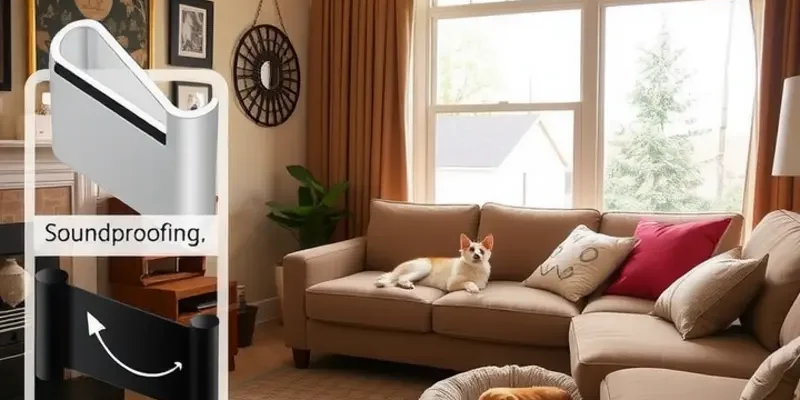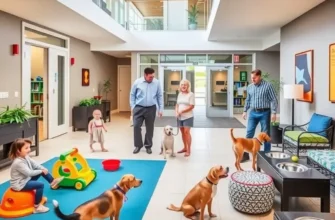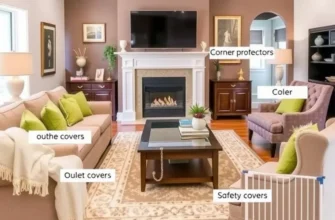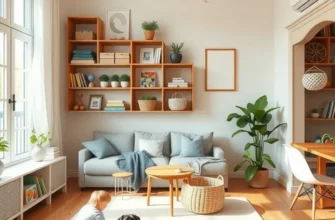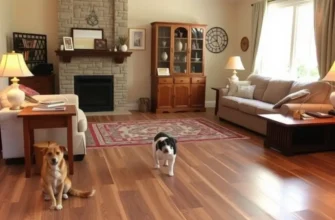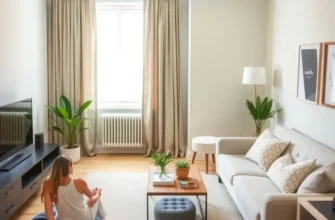Living in an apartment with pets can come with its own set of challenges, especially when it comes to noise. Families, pet owners, couples, and renters often seek a peaceful living environment while ensuring their pets feel comfortable and happy. Whether it’s the soft pitter-patter of paws or the enthusiastic barks of a dog, managing noise levels is crucial. Fortunately, there are effective strategies to minimize sound disturbances, making your home a serene sanctuary for everyone, including pets and children. In this guide, we’ll explore practical noise reduction techniques tailored to families and pet lovers alike. By creating a harmonious living space, you can maintain your peace while nurturing a loving environment for your four-legged family members.
Creating a Peaceful Environment for Pets
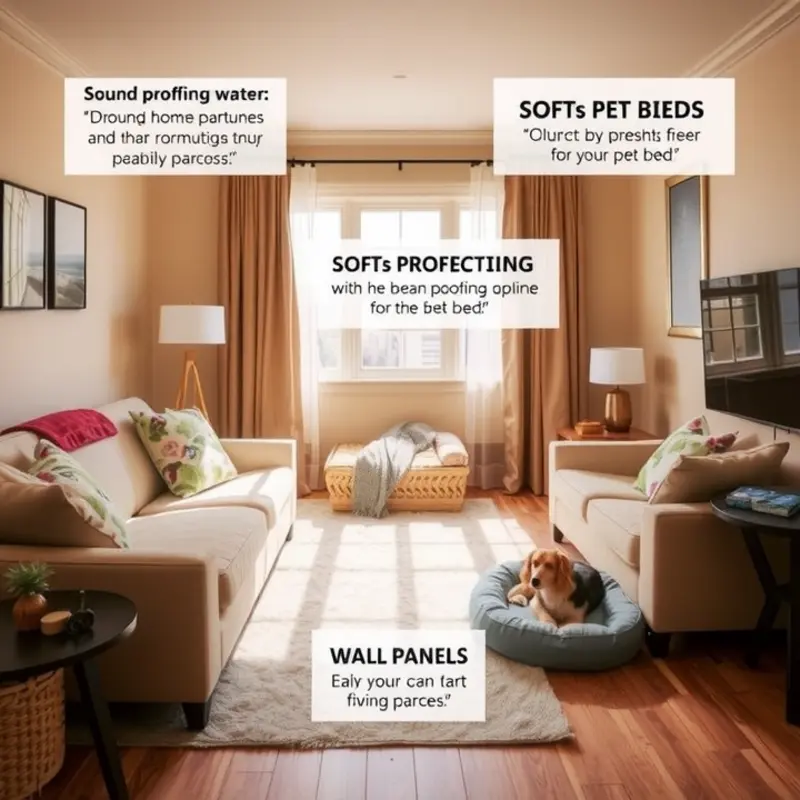
Fostering a tranquil environment for your furry companions begins with understanding their behavior and the noise they naturally produce. Pets, like humans, have specific needs which, when unmet, can lead to anxiety and increased noise levels. Addressing these needs by soundproofing, arranging furniture wisely, and creating quiet hideaways can yield immense benefits for both you and your pets.
Firstly, soundproofing techniques can buffer external noise and help pets remain calm. Investing in thick rugs or carpets can dampen the sounds of footsteps, whether from your energetic dog or from an active cat landing from its latest aerial adventure. Heavy curtains or drapes also help to minimize external noise intrusion, such as street sounds or apartment neighbors. Additionally, consider sealing gaps under doors with draft stoppers or using furniture to block some of the sound pathways.
Strategically arranging furniture can also contribute to reducing noise and creating a more peaceful atmosphere. Place your pet’s bed in a quiet corner, away from windows and high-traffic areas. This not only lessens the noise they hear but also gives them a sense of security. Tall bookshelves or plants can act as sound barriers and help define spaces. Position these items between noisy areas and your pet’s resting place to create a natural buffer.
Creating cozy hideaways is essential for pets to unwind and recharge, which in turn helps keep noise levels manageable. Whether it’s a tent for your cat or a covered bed for your dog, these spaces should be inviting and restful. Ensure these hideaways are situated in quieter parts of your home, away from distractions and disturbances. Observe your pet and see where they naturally gravitate, then enhance these areas with soft bedding and ambient features.
It’s also important to recognize that specific materials and layouts can impact noise. For those living in smaller apartments, effectively using space-saving furniture helps keep the area open and less cluttered. Convertible furniture pieces can maximize space without sacrificing function, leaving room for your pets to roam freely. For additional ideas on stylish yet functional apartment layouts, you might consider exploring DIY entryway ideas.
By proactively considering these elements, you can deepen understanding of your pet’s environmental needs. This approach minimizes stress and noise, creating a more serene living space. Your efforts will foster a harmonious home shared with your beloved pets.
Soundproofing Solutions for Apartment Living
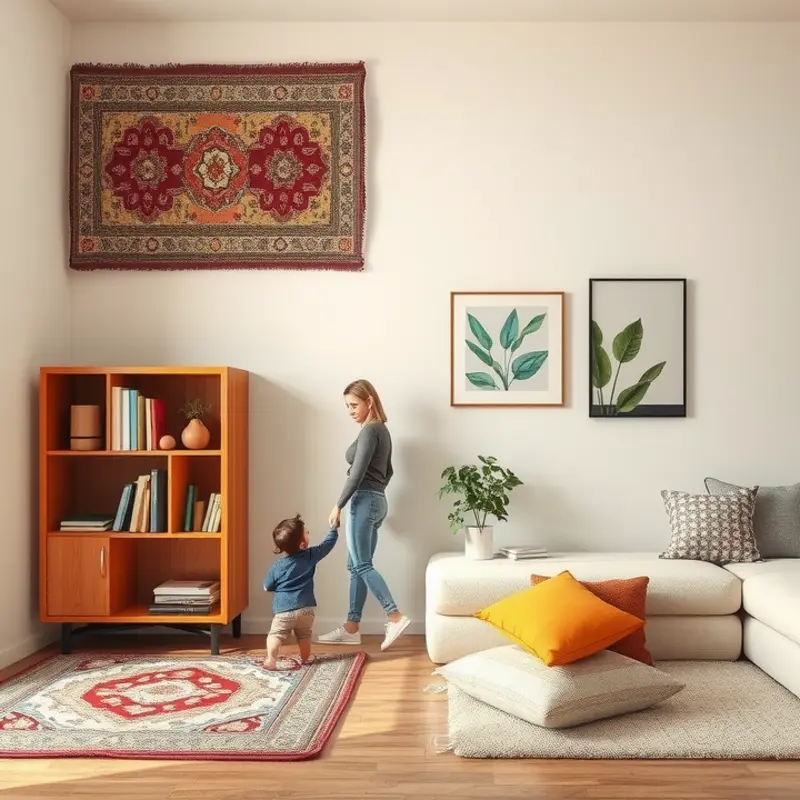
Living in close quarters means noise from pets can easily disturb neighbors. Implementing soundproofing methods can significantly reduce this problem, creating a peaceful environment.
Start by exploring affordable sound-absorbing materials. Acoustic panels or foam tiles are effective at dampening sound. They are easy to install and can be creatively arranged to enhance the decor. Look for options that are light yet dense and can be mounted without damaging walls.
Rugs and carpets act as sound barriers. They prevent noise from traveling to the floor below. Opt for thick, dense textures that can absorb more sound. Layering rugs can add extra noise reduction, and non-slip mats can keep them securely in place, preventing accidental slips, especially when pets are racing around.
Wall hangings provide another layer of noise insulation. Tapestries, fabric wall art, or quilted pieces add an insulating barrier while enhancing the aesthetic appeal of a room. The softer and denser the material, the more noise it will absorb.
Strategically using shelving and furniture can also play a part in soundproofing. Consider placing bookshelves against shared walls. Filling them with books and decorative items helps block and absorb sound. Similarly, upholstered furniture in living areas can mitigate noise travel. The soft surfaces absorb sound waves, minimizing echoes and loud barks.
Adding soundproof curtains or heavy drapes can be beneficial. They help soften sharp noises and keep the room quieter by absorbing sound before it escapes through windows. These additions are perfect for rooms with large windows or sliding doors, where sound escape tends to be higher.
Incorporating white noise machines can also help. They produce subtle sounds that mask other noises, creating a consistent background hum. This can be particularly useful for pets that are reactive to outside disturbances, helping them remain calm.
Investing in some pet-specific solutions can ensure noise remains manageable. Offering your pets interactive toys or creating active spaces indoors can divert their energy from causing a ruckus. Regular playtimes can help expend their energy, leaving them less inclined to be noisy.
When redesigning or decorating, consider an approach that balances aesthetics and functionality, ensuring your space remains inviting yet soundproofed. By incorporating these elements, you can maintain a quieter apartment, keep your neighbors happy, and create a safe, serene environment for your pets and family.
Additionally, for those concerned with the acoustic impact of such renovations, exploring external resources like renter-safe bathroom upgrades can provide more insight into enhancing home environments without permanent changes.
Final words
Creating a noise-reduced haven in an apartment for pets and families is not only achievable but essential for a harmonious living experience. By understanding your pets’ needs and implementing strategic soundproofing methods, you can ensure a tranquil environment that promotes well-being for all family members. Remember, every change you make, even small ones, can significantly enhance the cozy atmosphere of your home. Embrace these tips, and enjoy a quieter, more peaceful living space with your furry friends!

